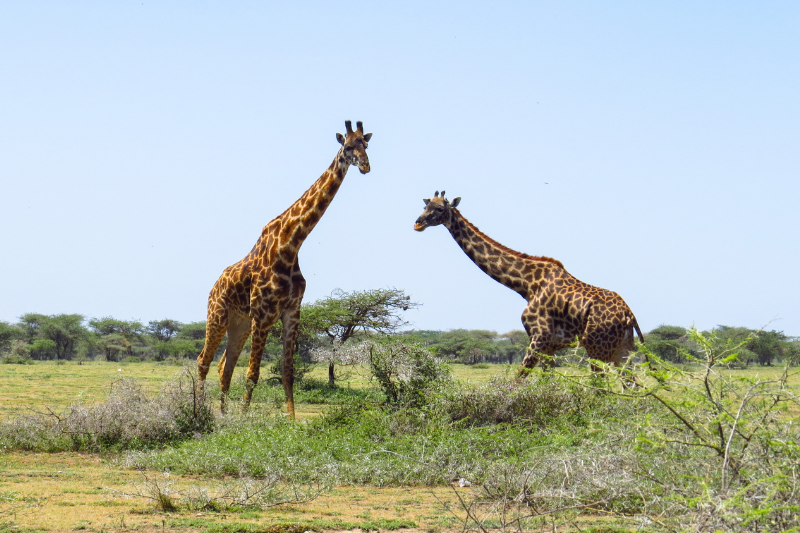The name “Serengeti” stirs something primal in every traveler’s heart. It conjures visions of endless golden plains, the thunder of hooves during the Great Migration, and the haunting roars of lions under a star-soaked African sky. Located in northern Tanzania, the Serengeti National Park is one of the most iconic wildlife destinations on Earth—raw, untamed, and unforgettable.
If you’ve ever dreamed of being part of a real-life nature documentary, this is your stage. Here’s what it’s like to embark on a safari adventure in the Serengeti and how to make every moment count.
Day 1: Arrival and First Glimpse of the Wild
Morning: Journey to the Serengeti
Most safaris begin in Arusha, Tanzania’s safari capital. After a scenic flight or bumpy but beautiful drive from Kilimanjaro International Airport, you’ll find yourself transported from city life into the heart of the African wilderness.
Flying into one of the airstrips like Seronera offers breathtaking aerial views of the Serengeti’s vastness—zebra herds like ants, rivers winding through open plains, and scattered acacia trees.
Afternoon: First Game Drive
Upon arrival, you’re met by your guide in a 4×4 safari vehicle. This isn’t just transportation—it’s your mobile observation post for the next few days.
By late afternoon, you’re likely already spotting:
- Elephants lumbering across grasslands
- Giraffes nibbling acacia leaves
- Hyenas skulking through the bush
- Lions lounging under shade, eyes blinking slowly at the sky
No two game drives are the same. You may witness a cheetah sprinting after a gazelle, or find a pride of lions feasting on a fresh kill. The drama of nature unfolds without script.
Evening: Sunset and Campfire Tales
As the sun sets in the Serengeti, the skies explode in oranges and purples. You’ll settle into your tented camp or safari lodge, often luxuriously appointed with open views of the bush.
Enjoy a candlelit dinner under the stars, complete with freshly cooked local dishes—grilled meats, spiced vegetables, and rich stews. Then gather by the fire for stories, perhaps with a glass of South African wine in hand, while hyenas call in the distance.
Day 2: The Heart of the Serengeti – Big Cats and Big Moments
Early Morning: Sunrise Safari
Wake before dawn for a sunrise game drive—the animals are most active in the cool hours.
This is prime time for spotting predators:
- Leopards draped across tree branches
- Cheetahs scouting the open plains
- Lions moving with purpose before the midday heat settles in
You may also spot buffalo, wildebeest, jackals, and countless antelope species like impala and Thomson’s gazelle.
Optional: Book a hot air balloon ride. Soar over the Serengeti at sunrise—it’s surreal. The views are panoramic and peaceful, with animals below and the breeze guiding your journey. Finish with a champagne bush breakfast on landing.
Midday: Rest and Reflection
The heat rises, and even the animals take a break. Return to camp for brunch and a midday siesta.
Some camps offer cultural activities, such as:
- Visiting a nearby Maasai village to learn about their traditions and dances
- Attending a storytelling session or drumming performance
Afternoon: The Circle of Life
Head out again as the sun dips and animals emerge. The Serengeti is famous for its Great Migration—an epic journey of over 1.5 million wildebeest and zebra that circle from Tanzania to Kenya and back.
Depending on the season:
- December to March: Calving season in the south—great for predator sightings
- April to June: Herds move northwest—lush green landscapes
- July to October: River crossings at the Grumeti and Mara Rivers—dramatic and dangerous
- November: Herds head back south—storms on the horizon
Even if you’re outside the migration path, the density of wildlife here ensures incredible sightings every day.
Evening: Night Safari (Optional)
Some private conservancies or lodges offer night safaris, giving you a rare look at the nocturnal world:
- Genets and civets creeping through the underbrush
- Owls swooping silently in the dark
- The glint of leopard eyes in your spotlight
It’s an entirely different Serengeti after dark.
Day 3: Farewell to the Wild – Sunrise and Reflection
Early Morning: One Last Game Drive
Your final morning is a chance for one more adventure. Maybe you finally spot that elusive black rhino, or catch a rare glimpse of African wild dogs on the move.
Nature doesn’t promise anything—but when it delivers, it’s magic.
Return to camp, savoring your last cup of strong Tanzanian coffee with the sound of the wild around you. Then it’s time to pack and head back toward civilization, heart full and camera memory cards bursting.
Tips for a Serengeti Safari
- Best Time to Visit: June–October (dry season and migration); December–March (calving season).
- Clothing: Lightweight, neutral tones; long sleeves and pants for sun and bugs.
- Essentials: Binoculars, camera with zoom lens, hat, sunscreen, insect repellent.
- Health: Vaccinations and anti-malaria medication are recommended.
- Guides Matter: A good guide transforms your experience with tracking skills and deep knowledge.
The Serengeti Stays With You
There’s something spiritual about the Serengeti. Maybe it’s the sense of scale—the vast plains that stretch to the horizon. Maybe it’s the animals, living wild and free as they have for thousands of years. Or maybe it’s that you realize how small you are, and how connected everything is in this incredible circle of life.
You leave the Serengeti with dusty boots, an aching camera arm, and stories that feel more like dreams. But more than anything, you leave with awe—and a promise to return.













